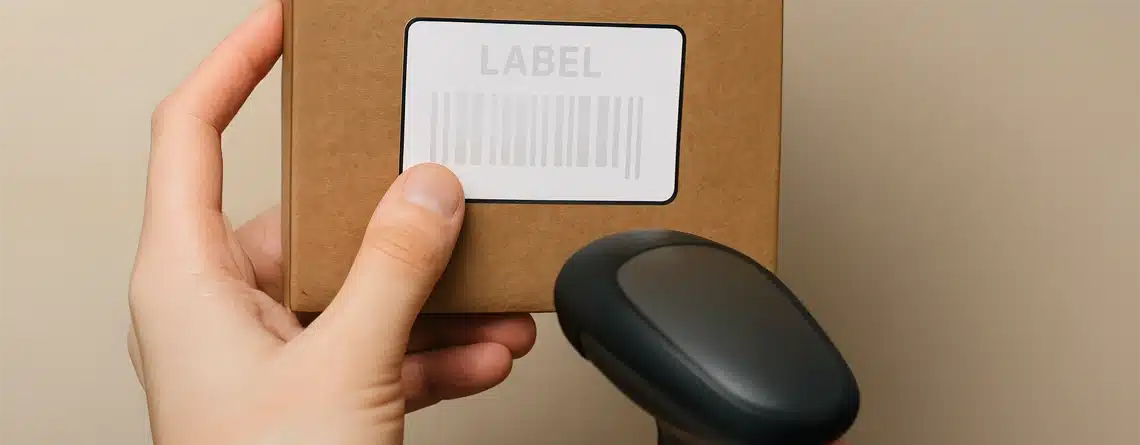How to Read a Faded Label With These Smart Tricks
If you’re wondering how to read a faded label, start by shifting the light. A flashlight or angled desk lamp can reveal faded text that overhead lighting hides. Next, try using your phone to snap a close-up photo, then adjust brightness and contrast-filters like black-and-white or negative often bring hidden details into view.
For thermal or barcode labels, a scanner might still detect data even if you can’t. And if that doesn’t work, comparing nearby labels or using context clues often helps you fill in the blanks quickly.
Smart Tricks for Reading a Faded Label
| Trick | Tool | When to Use |
|---|---|---|
| Adjust Lighting | 🔦 Flashlight | Label is faded |
| Tilt Surface | — | Label has glare |
| Use Phone Camera | 📸 Phone camera | Barcode won’t scan |
| Try Barcode Scanner | 🔎 Barcode scanner | Numbers are unclear |
| Rub with Pencil | ✏️ Pencil | Label is worn |
| Cross-Check Nearby Labels | — | Label is missing |
Whether you’re sorting school supplies, unpacking boxes in a warehouse, or trying to ID a mystery bin in your garage—here’s how to decode that worn-out label fast:
1. Adjust the Lighting
Shine a flashlight or lamp from the side, not straight on. Side lighting highlights shallow impressions or faded ink better than overhead lighting.
2. Tilt the Surface
Move the label around under the light to catch shadows or reflections. Especially helpful on thermal labels or anything with a slight gloss.
3. Use Your Phone Camera
- Take a photo, then adjust contrast, brightness, and sharpness in your phone’s editor
- Try black-and-white or negative filters to reverse the fading
- Zoom in closely to spot faint letters or numbers
4. Try a Barcode Scanner
Even if it looks unreadable, scanners often pick up details that your eyes can’t. Test it with:
- A phone barcode scanning app
- A POS or handheld scanner
- Inventory management tools
5. Rub with a Pencil (for Handwritten Labels)
Place a thin piece of paper over the label and gently rub a pencil across it. This can bring out the indentations of handwriting that’s long since faded.
6. Cross-Check Nearby Labels
Still can’t read it? Use context clues:
- Match with surrounding bins or folders
- Look at similar item codes or groupings
- Check your digital inventory or notebook
When to Stop and Replace It
Sometimes it’s faster to stop squinting and just start fresh:
- Try re-labeling with bold, legible options that won’t fade as quickly:
- Print a new barcode or ID tag using fade-resistant or laminated label stock
- Use color-coded dot stickers to visually sort categories quickly
- Handwrite a fresh label with a permanent, pigment-based marker or pen
How One Teacher Used Star Stickers to Stay Organized
At a busy elementary school in Michigan, one teacher turned to star stickers when her student supply bins started looking worn and illegible midyear. Instead of rewriting every label, she assigned each student a color-coded star from this school-friendly sticker pack.
The trick? She placed the stars on both the bin and the student’s folder. This simple visual cue helped first graders return books and supplies to the right spot without constant reminders. By the end of the year, she said the stars saved her over an hour a week in clean-up and label maintenance.
Tip: Color or shape coding isn’t just for schools. The same idea works in warehouses, libraries, and shared office spaces—anywhere people need to return items to the right location without confusion.
Bonus Tip: Prevent Future Label Fading
If you’re constantly dealing with unreadable barcodes or smudged bin labels, it’s worth taking a minute to prevent the problem before it starts.
A few simple changes, like switching to fade-resistant thermal paper, storing supplies in cool areas, and using coated or laminated label stock, can save you time in the long run.
Want more tips that actually work? Read our post on how to prevent barcode labels from fading or smudging for smart, durable labeling strategies that help you avoid the faded-label scramble altogether.
How to Read a Faded Label FAQs
Use side lighting, tilt the surface, take a high-contrast phone photo, or try rubbing with a pencil to bring out the details.
Yes. Thermal labels fade due to heat, light, friction, or poor storage. Keep them in cool, dry, dark areas to extend legibility.
Try a scanner app, adjust lighting, or reprint using a more durable label. You can also replace it with fade-resistant barcode stickers.
Sometimes. Use tracing paper and pencil to capture indentations. Otherwise, rewrite using a bold, pigment-based pen or marker.
Look for permanent adhesive labels with fun visuals like stars or color dots. Choose fade-resistant options for durability.
Store items out of direct sunlight, and opt for labels made from UV-resistant materials or darker, more stable pigments.
No label lasts forever, but fade-resistant adhesives and coated papers help. Pigment ink also outlasts dye-based ink.




